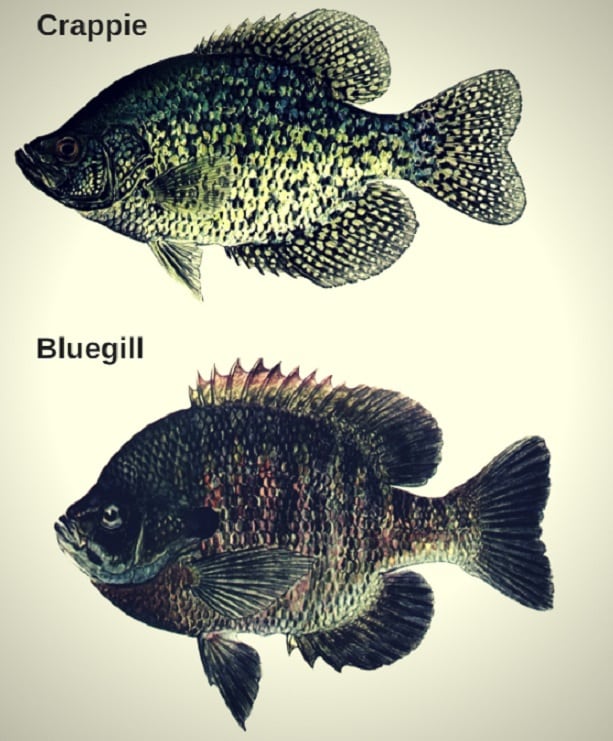
At first, the differences between crappie and bluegill may seem superficial at best. They are both fish in the wild that are popular for those who love to fish to catch. They are often considered the type of fish that many starting out fishing will go after. For many who may not pay too much attention, there are seemingly small differences between both species which is understandable.
Crappie vs Bluegill
However, there are some legitimate differences between the two fish that you need to know about if you are deciding which one to go after on your next fishing trip.
Differences between Crappie and Bluegill
Crappie
Found mostly in the eastern part of the US, there are white and black versions of this popular sport fish. You can recognize a crappie by the small head, arched back, and upper jaw that extends below the eye. The crappie can grow up to 19” long and weigh just below 6 pounds. The fins on both the dorsal and anal part of the fish are identical, and the white and black version differ, apart from color, only by the number of spines.
A typical crappie lives to be about 15 years old and adults will feed on minnows and other small fish while the young typically feed on larvae and crustaceans.
Bluegill
Bluegills are mostly found along the coastal areas of the US, ranging from Virginia to Florida to Texas. Also, they can be found as far north as New York and as deep into the US as Minnesota. A bluegill grows to be about 12” long and can weigh up to 4.5 pounds. There are dark spots on the dorsal fin and you’ll see vertical bars along the sides.
Most bluegills have dark green olive backs and sides that are blended with lavender, brown, or orange. The belly of the bluegill will range from yellow to orange. The adults will feed on larvae and aquatic insects while the young will often eat plankton.
Similarities and Differences
The most obvious difference is indicated in the name of the bluegill, which has a patch of blue coloring on a tab attached to their gills. A bluegill is generally rounder in shape compared to a crappie, has different coloring, and a much smaller mouth that makes comparisons easy to make.
The crappie is somewhat larger and heavier than the bluegill and both fish are popular in terms of what people like to catch, prepare, and eat with other foods. However, neither fish can be considered highly popular compared to trout or other species which are far more prevalent in terms of being on the dinner plate.
Both crappie and bluegill are considered to be panfish. In addition, both crappie and bluegill will spawn during the spring with the males protecting the nest of the eggs until they hatch. While similar in some ways, there are distinctive differences between crappie and bluegill, starting with the general location where they can be found. Although both are panfish, the differences are such that they are very distinctive.